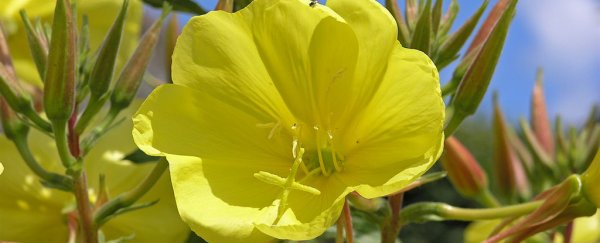The flowers are listening, according to new research – well, in a sense, at least.
Scientists have found evidence that plants can actually hear the buzz of passing bees and produce sweeter nectar in response to entice the flying insects in. And flowers are technically their 'ears'.
Based on observations of evening primroses (Oenothera drummondii), the team behind the new study discovered that within minutes of sensing the sound waves of nearby bee wings through flower petals, the concentration of the sugar in the plant's nectar was increased by an average of 20 percent.
The flowers even seemed able to tune out irrelevant background noises, such as the wind.
This capability could well give some plants an evolutionary advantage, say the scientists, maximising their chances of spreading pollen.
"Our results document for the first time that plants can rapidly respond to pollinator sounds in an ecologically relevant way," write the researchers from Tel-Aviv University in Israel.
The scientists went into the experiments with a hypothesis in place: that plants can indeed pick up the vibrations of sound waves, and that this might be part of the reason many plants' flowers are bowl shaped, to better trap the sounds.
Across several experiments involving more than 650 evening primrose flowers, nectar production was measured in response to silence, sound at three different frequency levels, and a recording of the buzzing noise made by bees.
Sure enough, both the field recording of buzzing bees and the low-frequency sounds that closely matched the recording were enough to change the mix of the nectar in just three minutes. The silence and the high and mid frequency sounds had no effect.
The team also tried the experiments with plants that had some flower petals removed. No change in nectar production was noted, indicating that it is indeed the flowers that have the job of the ears.
These lab tests were backed up by observations the team made in the wild.
"Plants have plenty of interactions with animals, and animals both make and hear noises," one of the team, Lilach Hadany, told Ed Yong at The Atlantic.
"It would be maladaptive for plants to not use sound for communication. We tried to make clear predictions to test that and were quite surprised when it worked out."
Pushing out sweeter nectar means bees may well stay feeding for longer – increasing the chances that they'll pick up pollen – and also makes it more likely that the insects will return to flowers of the same species in the future.
This sweetness boost needs to be timed perfectly though, to make it worth the flowers' while – and that's exactly what seems to be happening.
As yet the work hasn't been peer-reviewed, and it's not clear precisely how the vibrations are being decoded and turned into a trigger for sweeter nectar production, but it's an intriguing first step into the study of how plants react to sounds around them.
We've already seen past research into how plants respond to touch and daylight, and now we can add acoustic vibrations to the list.
Next, the researchers want to look at how plants might respond to other sounds and animals, including humans.
"Some people may think, how can [plants] hear or smell?" one of the study authors Marine Veits told National Geographic. "I'd like people to understand that hearing is not only for ears."
The research has been published on the pre-print server bioRxiv.
